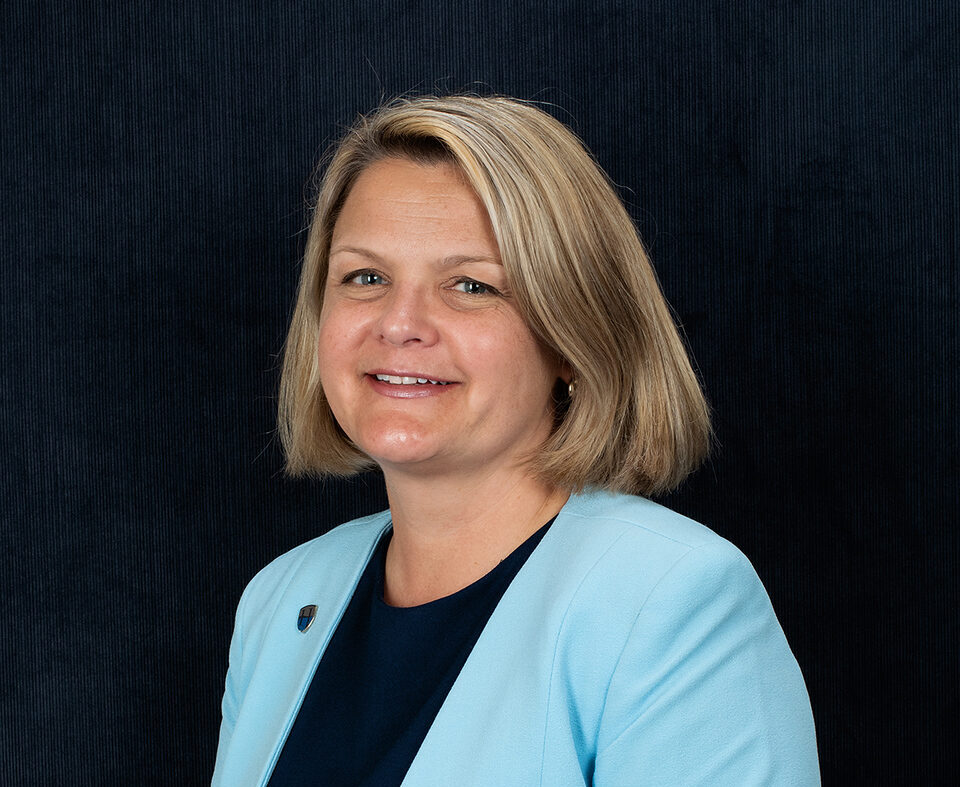
By Maddie Garvis//
Upon her inauguration in October 2015, Andrea Chapdelaine became only the third woman to be president of Hood College since its establishment in 1893.
Although it was a women’s college, Hood didn’t select its first woman as president until 1975, 82 years after first opening its doors. This first woman was Martha Church, who remained president for 20 years, from 1975-1995.
Church had a very successful track record as president, establishing the honor’s program and greatly expanding the graduate school. Church is also credited with keeping the college afloat in a time when women’s colleges across the country were shutting their doors.
“Dr. Church was such a trailblazer,” Chapdelaine said. “She was incredibly dedicated, in her tenacity, her commitment to this college. She worked tirelessly for Hood each and every day.”
While at Hood College, Church was recognized as one of the 100 most effective college and university presidents in the nation, according to the Frederick News Post. Chapdelaine had the opportunity to go to Florida, where Church had retired, to meet her on a few occasions.
“Twenty-five years later she still spoke with such fondness for this institution,” Chapdelaine said. “That was very inspirational to me.”
While at Hood, Church said her goal was to “make Hood College and Frederick a center for women of all ages.” Church died Jan. 27, 2019 at the age of 88.
In 1995, Hood named Shirley Peterson as its second woman president. Peterson was president of Hood for five years, from 1995-2000, and came from a background unusual for the president of an academic institution.
Peterson had a background in both law and finance before arriving at Hood and in 1992 became the first female commissioner of the Internal Revenue Service (IRS).
Peterson came to Hood during a difficult time, as enrollment numbers at women’s colleges were still plummeting nationwide. During her presidency, construction of the Hodson Science and Technology Center began, aligning with Peterson’s goals of bringing more advanced technology to the college to be available to students and faculty.
“She was given a very daunting task. Enrollment was still declining among undergraduate women,” Chapdelaine said. “She came from the business world and I think she brought a lot of that business sense to the college, and that was really valuable. She put systems in place that I’m sure we’re still using today.”
Peterson grew to be unpopular among students and faculty, who felt that she was not involved enough in student life, according to the Frederick News Post. In November 1999, students submitted a petition with over 300 names declaring their vote of no confidence in Peterson, soon followed by a vote of no confidence from a committee of faculty members, according to a 1999 Hood Today article.
Although she had just signed a five-year employment contract, Peterson resigned in April 2000, according to the Frederick News Post.
“There’s no perfect president,” Chapdelaine said of Peterson. “In her short time, she was doing what she could to try to keep the college strong.”
In 2015, Chapdelaine was among three finalists for the president position. She was up against a man who was the president of another college at the time and a woman who was coming from working in military education.
Chapdelaine had been a provost for 10 years before coming to Hood, and she said it was time for a change. Around the same time, Hood was looking for a new president.
According to the American Council on Education, only about 30% of college presidents are women, and less than half of chief academic officers at colleges and universities are women.
Chapdelaine said that a large part of being a successful leader of an academic institution such as Hood is to surround yourself with a strong team.
“You can’t be an effective president alone,” Chapdelaine said. “You have to have a strong team; you have to be able to build that team.”
President Chapdelaine’s cabinet here at Hood has six members, four of them women. This includes Nancy Gillece, vice president for institutional advancement, Debbie Ricker, provost and vice president for academic affairs, Laurie Ward, vice president for marketing and communications and Diane Wise, executive assistant to the president and board of trustees secretary.
“There is no way I could do this job without having these amazing people,” Chapdelaine said. “I’m very fortunate in the people I have at my table with me. I mean everybody, the faculty, the staff that work so hard each and every day.”
Since her arrival at Hood, Chapdelaine has greatly expanded scholarship programs, established a staff council to facilitate faculty participation in decision-making, and has developed community partnerships to provide more experiential learning opportunities for students.
Chapdelaine said that the legacy she hopes to leave at Hood is one of mentorship and inspiration to students, just as her own mentors inspired her throughout her own academic career.
“I want to mentor all students, but am especially focused on our female students, our students who are first generation like I was, who are coming from challenging backgrounds,” Chapdelaine said. “That pipeline of female college presidents is small and it’s leaking. And that’s worrisome.”
Chapdelaine emphasized that it’s very important to her to encourage students, especially female students, to aspire to higher administration roles so more women can make their way to leadership roles at academic institutions nationwide.




Be the first to comment